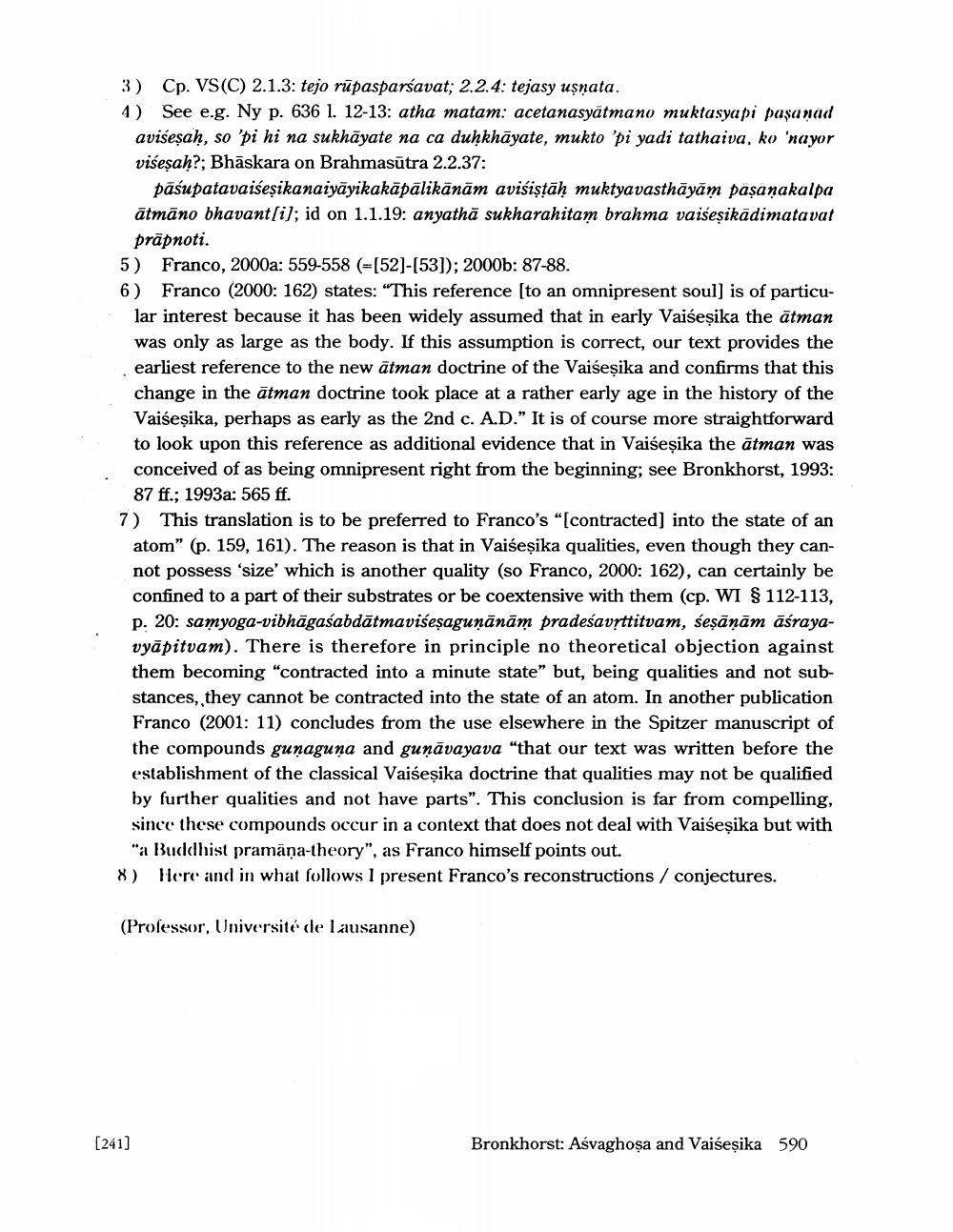Book Title: Asvaghosa And Vaisesika Author(s): Johannes Bronkhorst Publisher: Johannes Bronkhorst View full book textPage 8
________________ 3) Cp. VS(C) 2.1.3: tejo rupasparsavat; 2.2.4: tejasy usnata. 4) See e.g. Ny p. 636 1. 12-13: atha matam: acetanasyatmano muktasyapi pasanad avisesah, so 'pi hi na sukhayate na ca duhkhayate, mukto 'pi yadi tathaiva, ko 'nayor visesah?; Bhaskara on Brahmasutra 2.2.37: pasupatavaisesikanaiyayikakapalikanam avisistah muktyavasthayam pasanakalpa atmano bhavant[i]; id on 1.1.19: anyatha sukharahitam brahma vaisesikadimatavat prapnoti. 5) Franco, 2000a: 559-558 (=[52]-[53]); 2000b: 87-88. 6) Franco (2000: 162) states: "This reference (to an omnipresent soul) is of particu lar interest because it has been widely assumed that in early Vaisesika the atman was only as large as the body. If this assumption is correct, our text provides the earliest reference to the new atman doctrine of the Vaisesika and confirms that this change in the atman doctrine took place at a rather early age in the history of the Vaisesika, perhaps as early as the 2nd c. A.D." It is of course more straightforward to look upon this reference as additional evidence that in Vaisesika the atman was conceived of as being omnipresent right from the beginning; see Bronkhorst, 1993: 87 ff.; 1993a: 565 ff. 7) This translation is to be preferred to Franco's "[contracted) into the state of an atom" (p. 159, 161). The reason is that in Vaisesika qualities, even though they cannot possess 'size' which is another quality (so Franco, 2000: 162), can certainly be confined to a part of their substrates or be coextensive with them (cp. WI SS 112-113, p. 20: samyoga-vibhagasabdatmavisesagunanam pradesavrttitvam, sesanam asrayavyapitvam). There is therefore in principle no theoretical objection against them becoming "contracted into a minute state" but, being qualities and not substances, they cannot be contracted into the state of an atom. In another publication Franco (2001: 11) concludes from the use elsewhere in the Spitzer manuscript of the compounds gunaguna and gunavayava "that our text was written before the establishment of the classical Vaisesika doctrine that qualities may not be qualified by further qualities and not have parts". This conclusion is far from compelling, since these compounds occur in a context that does not deal with Vaisesika but with "a Buddhist pramana-theory", as Franco himself points out. 8) Here and in what follows I present Franco's reconstructions / conjectures. (Professor, Universite de lausanne) [241] Bronkhorst: Asvaghosa and Vaisesika 590Page Navigation
1 ... 6 7 8
